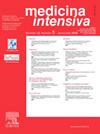Application of a machine learning model for early prediction of in-hospital cardiac arrests: Retrospective observational cohort study
IF 2.7
4区 医学
Q2 CRITICAL CARE MEDICINE
引用次数: 0
Abstract
Objective
To describe the results of the application of a Machine Learning (ML) model to predict in-hospital cardiac arrests (ICA) 24 hours in advance in the hospital wards.
Design
Retrospective observational cohort study.
Setting
Hospital Wards.
Patients
Data were extracted from the hospital's Electronic Health Record (EHR). The resulting database contained a total of 750 records corresponding to 620 different patients (370 patients with ICA and 250 control), between may 2009 and december 2021.
Interventions
No.
Main variables of interest
As predictors of ICA, a set of 28 variables including personal history, vital signs and laboratory data was employed.
Models
For the early prediction of ICA, predictive models based on the following ML algorithms and using the mentioned variables, were developed and compared: K Nearest Neighbours, Support Vector Machine, Multilayer Perceptron, Random Forest, Gradient Boosting and Custom Ensemble of Gradient Boosting estimators (CEGB).
Experiments
Model training and evaluation was carried out using cross validation. Among metrics of performance, accuracy, specificity, sensitivity and AUC were estimated.
Results
The best performance was provided by the CEGB model, which obtained an AUC = 0.90, a specificity = 0.84 and a sensitivity = 0.81. The main variables with influence to predict ICA were level of consciousness, haemoglobin, glucose, urea, blood pressure, heart rate, creatinine, age and hypertension, among others.
Conclusions
The use of ML models could be of great support in the early detection of ICA, as the case of the CEGB model endorsed, which enabled good predictions of ICA.
应用机器学习模型早期预测院内心脏骤停:回顾性观察队列研究
目的描述应用机器学习(ML)模型提前24小时预测医院病房内心脏骤停(ICA)的结果。设计回顾性观察队列研究。SettingHospital病房。患者数据从医院的电子健康记录(EHR)中提取。由此产生的数据库包含2009年5月至2021年12月期间共750条记录,对应620名不同的患者(370名ICA患者和250名对照组)。作为ICA的预测因子,我们采用了包括个人病史、生命体征和实验室数据在内的28个变量。对于ICA的早期预测,基于以下ML算法并使用上述变量的预测模型被开发和比较:K近邻、支持向量机、多层感知器、随机森林、梯度增强和梯度增强估计器的自定义集成(CEGB)。模型训练和评估采用交叉验证。在性能指标中,评估了准确性、特异性、敏感性和AUC。结果CEGB模型表现最佳,AUC = 0.90,特异性= 0.84,敏感性= 0.81。影响预测ICA的主要变量有意识水平、血红蛋白、葡萄糖、尿素、血压、心率、肌酐、年龄和高血压等。结论ML模型的使用对ICA的早期发现具有重要的支持作用,如CEGB模型所支持的情况,它可以很好地预测ICA。
本文章由计算机程序翻译,如有差异,请以英文原文为准。
求助全文
约1分钟内获得全文
求助全文
来源期刊

Medicina Intensiva
CRITICAL CARE MEDICINE-
CiteScore
2.70
自引率
20.00%
发文量
146
审稿时长
33 days
期刊介绍:
Medicina Intensiva is the journal of the Spanish Society of Intensive Care Medicine and Coronary Units (SEMICYUC) and of Pan American and Iberian Federation of Societies of Intensive and Critical Care Medicine. Medicina Intensiva has become the reference publication in Spanish in its field. The journal mainly publishes Original Articles, Reviews, Clinical Notes, Consensus Documents, Images, and other information relevant to the specialty. All works go through a rigorous selection process. The journal accepts submissions of articles in English and in Spanish languages. The journal follows the publication requirements of the International Committee of Medical Journal Editors (ICMJE) and the Committee on Publication Ethics (COPE).
 求助内容:
求助内容: 应助结果提醒方式:
应助结果提醒方式:


